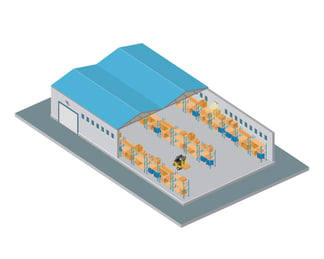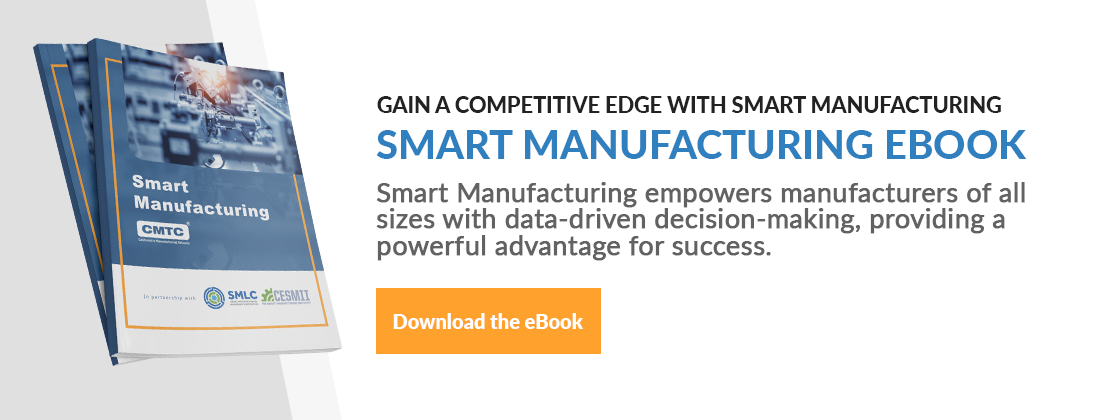September 1, 2015 | Smart Manufacturing
Benefits of Using Smart Manufacturing in the Value Chain (Part 3 of 6)
This post is the third installment of six regarding the concept of Smart Manufacturing (SM). This series aims to inform manufacturers of SM’s components, how it affects business productivity, economics and plans, its importance in the value chain, how it changes the workforce and the future of manufacturing overall. This series is written in conjunction with the Smart Manufacturing Leadership Coalition (SMLC).
If you missed the previous blogs, click on the following links: Part 1A, Part 1B, and Part 2.
What’s in it for me?
That’s the question expected from everyone who’s considering getting involved in Smart Manufacturing from the value chain of suppliers to manufacturer, distributors, solution providers, retailers and the final end-users (customers). Each stakeholder has the chance to reap the benefits of a totally integrated work environment that is seamless, affordable and (most importantly) more productive and competitive.
Stakeholders need to identify their sweet spots, which can include new performance, ventures or B2B opportunities. Also included is greater visibility, easier/lower cost access and accelerated deployment of new information technology.
The notion of a value chain is one that is often misconstrued and may need clarification. A supply chain in manufacturing refers to the company-to-company chain of suppliers and manufacturers involved in producing the final product. Interchanges tend to be more requirement and transaction-based and can also occur in between operations within an individual company or across multiple companies.
A value chain, on the other hand, refers to how each manufacturing process step adds value to the product and impacts the end-to-end manufacturing process, including overall environmental impact energy and materials usage. The intent is to identify the transaction points and focus on optimization across both sides of the value chain to achieve increased productivity, sustainability, innovation and competitiveness at the individual and collective stage.
With that said, this post’s content on benefits will be in order of the value chain’s path, starting with the supplier.

Benefits for the Supplier
A More Informed & Fluid Value Chain Path
In an environment where there’s limited communication with customer demand, it's extremely difficult for a manufacturing facility and its suppliers to adjust to the needs of the end-user in real time. In a value chain, business real-time exchanges and decisions are enabled among and between suppliers and the OEM — collectively addressing manufacturing and process performance impacts throughout the network.
This can all be based on and managed to an integrated, agreed-upon set of key performance indicators. SM brings to the table infrastructure that better enables demand dynamics throughout a value chain, as outlined by Jim Davis, the Vice Provost of Information Technology at UCLA.
“From a supplier’s standpoint, it has always made sense to be as precise as possible with the product produced and the demand for product, including individualized features. SM makes it possible to approach new levels of precision in new ways with data, information, analytics and modeling. [In a perfect world], the demand dynamics and key performance indicators are managed throughout the entire value chain as an integrated asset.”
For a real-world example, let’s take a food-processing manufacturer that depends on an extensive supply chain. From their manufacturing perspective, the idea of having the certificate of analysis as data before the product is shipped rather than when the product arrives at the factory’s loading dock is a big help. The data about the product can be incorporated into the final recipe at the factory so that the factory is configured and ready to go when the product arrives — saving both time and cost.
“From a supplier’s point of view, if they have information on what the manufacturer needs and when, then they can work better with their products. Suppliers usually ship to more than one company, so if they have this information from multiple businesses, they can be more responsive to all of their partners. They both win if they can get the B2B relationship established and the information shared in an appropriate way.”
Benefits for the Manufacturer
For both the supplier and the manufacturer, the benefits result in more efficient and effective communications. The stage is set for greater product transparency and track and traceability. One can now see ways to use models to predict needs and mitigate product variations between the supplier and the manufacturer. A digital certificate of analysis (that both parties can access via the SM platform’s cloud technology) is a key step that can lead to an increase in production, quality, visibility and optimization across the value chain.
Affordable Access to New Technology & Innovation
A mainstay element of SM is the ability to scale IT infrastructure and software access to drive down costs. It facilitates the extensive implementation and reuse of real-time software systems and metrics, provides trusted value chain data, interoperability and manages security in networked enterprises.
Rather than being restricted to using less-than-ideal software or constricted with moving to new software, SM makes it possible for small and medium manufacturers to change more easily. By reducing the emphasis on infrastructure that companies need to develop and manage, companies can access untapped potential with more resources and innovation available at their fingertips. Piloting new technologies with low risk could not be easier.

Pilot New Technologies for Larger Manufacturers
Small manufacturers can play a huge role in developing the evolution of SM due to their size and ability to move more quickly than larger manufacturers.
“In many situations, small companies have the particular expertise about a specific part, process step or product. This expertise can be used to develop new product opportunities or even software ventures by developing software models that can be used upstream and downstream.
At the same time that small companies are seeking opportunities for product lines, large companies can more easily work with small companies to pilot new products for which the small company has the expertise. These small companies are often more agile and have better expertise.
The idea of trying a new product using a small company, as opposed to a large capital investment to pilot a product, is a growing trend. SM enables the essential data and model interoperability in a secure environment,” explains Davis.
Increased Productivity via Sensors
Sensors and real-time data serve as the underlying ingredients that manufacturers need for better, more affordable and more productive operations. You can’t tap into new opportunities without “seeing” the operation, process or enterprise better, and you can’t manage metrics that you cannot measure.
Davis states, “What we’re also doing with SM infrastructure is making it possible to build sensor-to-action enterprise systems that incorporate the integrated data, analytics and models to inform decisions and to take action in business real-time.” The SMLC is focusing on the SM Platform infrastructure, accessible software and deployment capabilities to put real-time integrated data to use that meets all manufacturers alike at their readiness levels.
Benefits for Software Vendors & 3rd-Party Integrators
For the software solution providers, the concept of SM will bring about change to the software and systems overall business model. Licensing, purchasing and software support models will make available fee-for-use, value-added support services and product expansion opportunities. The goal is not to simply drive price down, but to increase access to new markets and service potential.
Providers are critically important. The objective is to build the necessary relationships with the providers and demonstrate their business opportunities along with the opportunities for manufacturers, explains Davis. “We’re doing everything to be partners. We don’t want to build infrastructure that competes.”
With an Open Platform, users and providers will benefit from a pay-per-use pricing structure that also opens business opportunities and incentives for all to participate. New business models open the floodgates to more customers and opportunities for product and service ideas.
Better User App Development & Feedback
Having a wider consumer base means having greater ability to experiment with new applications (apps) to create systems. Rather than investing completely in one company, the Platform opens the opportunity to test software among several companies and industries at the same time seamlessly transitioning from development to deployment and optimization phases and beyond.
The managed data and communication structure of the SM Platform also means vendors will be able to get feedback more quickly and from a variety of industry perspectives and users.
Less Nitty-Gritty Integration
"For the software integrators that set up new software technology for manufacturers, the SM Platform will greatly lessen the need for the physical IT infrastructure and decrease the physical effort of integration between the SM Platform and the factory operation,” says Davis. This saves tremendous time and allows the integrators to focus more on the function of the data analytics and modeling — the aspects of technology that produce the results for manufacturing information (data) that will assist them with real-time decision making.
Benefits for the Customers
KNOW What They’re Buying
With more data collected and interpreted throughout the value chain, customers will be able to take advantage of that newfound information as well. As with the food manufacturer example, the customer can stay better informed about the original source of the product and make value decisions based on how and where the product is made.
Manufacturers can provide customers better pinpoint track and traceability when there are issues. In general, customers become a strong voice in establishing features and manufacturing processes so the entire value chain needs to be responsive. When responsive, it becomes a competitive advantage for the manufacturer.
Increased Confidence & Personal Satisfaction
Now, with the ability to display more accurate information to consumers, customers will make better decisions using their purchasing power. Using the concept of demand dynamics, a more informed value chain is able to provide the products that the consumers are demanding. Knowing that their needs can be addressed quickly, customers are able to purchase with more confidence. Furthermore, this can benefit manufacturers as this type of customer-satisfaction-driven focus can help build better brand loyalty.
Contributor to this blog post included an interview with Jim Davis, the Vice Provost of Information Technology at UCLA.


